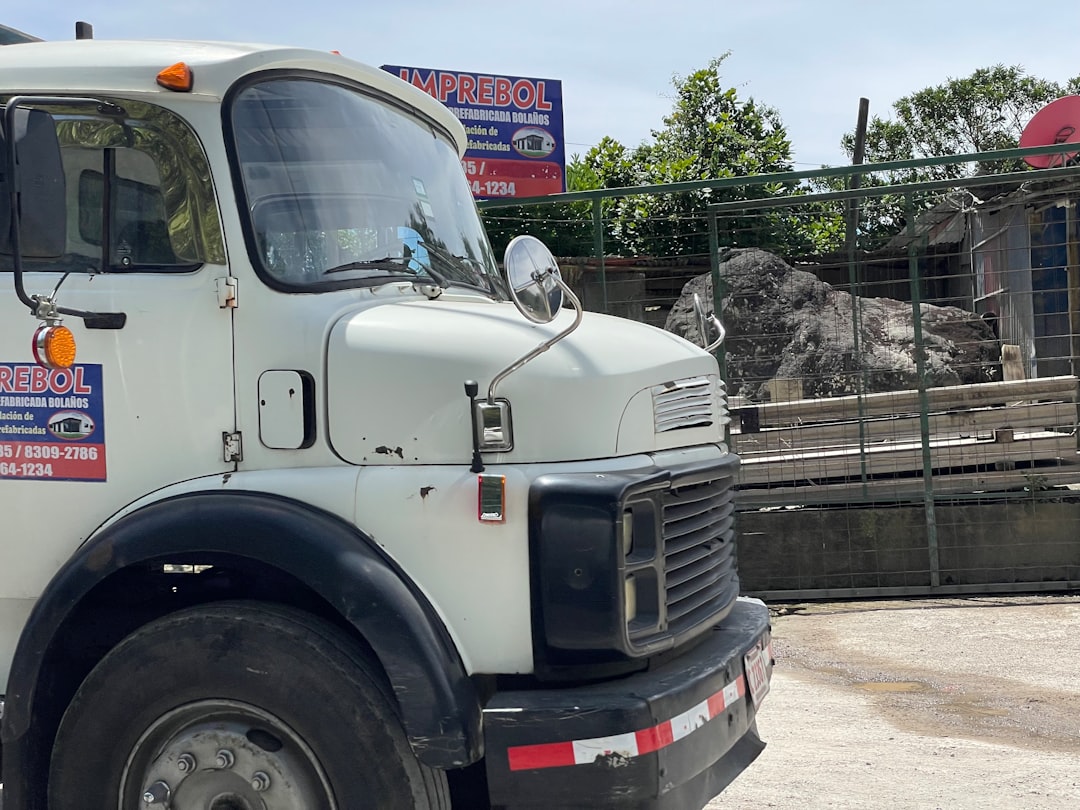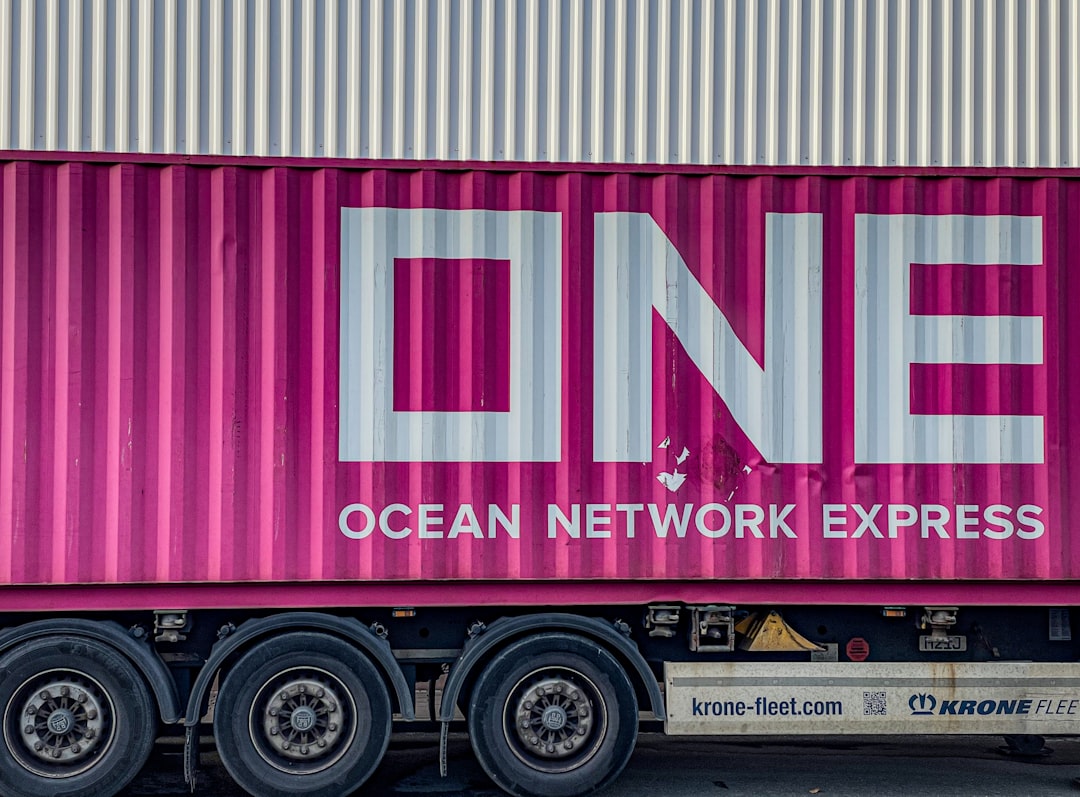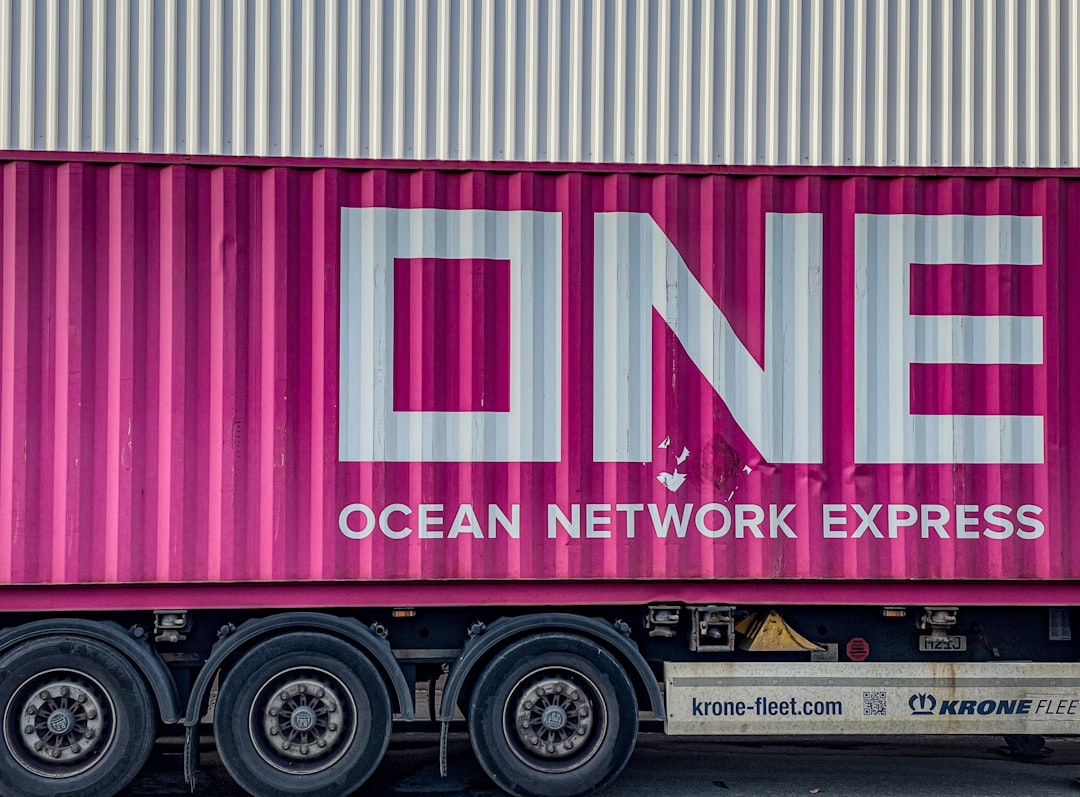Commercial Vehicle Insurance Rates Analyzing Industry Trends in Q3 2024
Commercial Vehicle Insurance Rates Analyzing Industry Trends in Q3 2024 - Market Valuation and Growth Projections for Commercial Auto Insurance
The commercial auto insurance market is experiencing a period of strong growth, with forecasts suggesting a substantial increase in value over the coming years. Estimates suggest a compound annual growth rate (CAGR) nearing 10% through 2029, primarily driven by a rise in commercial vehicle operations across various industries. Alongside this, the persistent challenge of commercial driver shortages continues to influence the market, making risk assessment a critical factor. Technological advancements, especially in telematics and the Internet of Things (IoT), are significantly impacting how insurers evaluate risk and determine premiums. While inflation has cooled somewhat, insurance rates, including those for commercial auto, haven't followed suit, continuing an upward trend. This suggests a continued focus on managing risk and the potential for insurance pricing adjustments in the future. Ultimately, this dynamic market requires all players, from insurers to policyholders, to proactively monitor and adapt to the changing circumstances.
Based on various market analyses, the commercial auto insurance sector appears poised for continued growth, with projections suggesting a moderate annual expansion rate of around 5% through 2030. This anticipated growth seems linked to factors like a rise in commercial vehicle registrations and the expansion of online retail operations. However, while advancements in vehicle safety are notable, the incidence of commercial vehicle accidents continues to climb, potentially fueled by increasing traffic congestion and driver fatigue. This rise in accidents presents a substantial challenge for insurance pricing models.
Interestingly, the integration of telematics in commercial vehicles is showing promise in potentially lowering insurance costs. Insurers are now able to leverage the real-time data provided by these systems to assess risks more precisely based on driver behaviors. Early findings suggest a potential 10-20% reduction in premium costs for those utilizing these technologies. Despite this, the overall claims costs for commercial auto insurance continue to be a primary concern. In recent years, the ratio of claims to premiums has remained consistently high, around 70%, presenting difficulties for insurers in developing appropriate pricing strategies.
The increased reliance on technology within vehicles also brings to light a new set of challenges—cybersecurity threats. The rising connectivity in modern commercial vehicles is increasing the potential for data breaches and other cyber-attacks, urging insurers to broaden the scope of their coverage to incorporate these emerging risks.
Further, it's observed that legislative changes at the state level can drastically impact commercial auto insurance rates. The wide variation in state-level regulations illustrates the significant influence of government policy on market dynamics. This regulatory variability makes it more difficult to pinpoint market trends.
A closer look reveals a potential gap in insurance coverage for small businesses within the sector. Evidence indicates that many small businesses are underinsured when it comes to commercial vehicle coverage, potentially exposing them to considerable financial risk in case of accidents. This finding has brought about discussions regarding the need for specialized and appropriately tailored insurance offerings to adequately meet the needs of this segment.
The growing use of big data analytics by insurers is intended to pinpoint trends and risk factors, which is leading to dynamic and more agile pricing strategies. While this increased sophistication in pricing models is beneficial, there is a possibility that it can result in greater disparity in premium costs across various regions and business segments.
Another noteworthy factor in the commercial auto insurance market is the surging demand for delivery services. This surge is directly linked to evolving consumer habits, and the increased number of vehicles involved in these services has been associated with a noticeable rise in commercial auto claims. These delivery vehicles face unique risks and levels of exposure, differing from conventional commercial vehicle fleets.
Furthermore, the frequency and severity of weather-related events show a link to claims increases related to commercial vehicles. Insurers are now beginning to consider climate change projections in their risk assessments and pricing, recognizing the long-term impacts of shifting weather patterns.
This dynamic sector is facing many complexities, a mixture of growth potential, heightened risk, and evolving technology. The insights gleaned from the market research and analysis are vital in navigating the future of this intricate and ever-changing insurance sector.
Commercial Vehicle Insurance Rates Analyzing Industry Trends in Q3 2024 - Driver Shortage Impact on Commercial Vehicle Insurance Sector
The persistent shortage of commercial truck drivers, estimated to reach a peak of 82,000 this year, is significantly impacting the commercial vehicle insurance sector in Q3 2024. Insurers are facing increased pressure to raise rates as they struggle to manage the risks associated with a shrinking pool of qualified drivers. This shortage is further complicated by insurers' increasing demands for stricter driver qualifications, which may inadvertently worsen the existing driver shortage. The situation creates a complex dynamic, as insurers try to balance the need for greater safety with the difficulty of finding enough qualified drivers. The industry is adapting to these circumstances, but the potential impact on operational expenses and the overall health of the insurance sector requires careful observation as the landscape continues to evolve. This driver shortage is a major factor influencing the ongoing trend of rising commercial vehicle insurance premiums.
The commercial trucking sector's persistent driver shortage, projected to worsen in 2024, is having a significant impact on the commercial vehicle insurance market. Industry groups like the American Trucking Associations have documented this shortage, linking it to increased freight demand and a graying workforce. The trucking sector, a substantial part of the US economy, is facing a challenge in attracting and retaining qualified drivers.
The commercial auto insurance industry has faced significant underwriting losses in the past, a trend that's likely to continue with the driver shortage. This situation is pushing insurers to take a more critical look at driver qualifications, potentially making it even harder to fill vacant positions. It's worth noting that the commercial auto insurance market, while facing these headwinds, is still expected to grow. However, economic pressures and the struggle to find drivers are driving up insurance costs.
The relationship between the driver shortage and accidents is a key area of focus. Researchers are finding evidence that accidents are rising in regions experiencing severe driver shortages, likely because of a reliance on less experienced personnel. This raises the risk profile for insurers, leading them to adapt their risk assessment methods. For example, instead of just evaluating the vehicle's features, they are increasingly examining a driver's history and training. The changing demographics within the trucking workforce, with the average age of drivers rising, further complicate this dynamic.
We're also seeing this shortage amplify the cost pressures for smaller trucking operations. These companies, often lacking the resources of their larger counterparts, are being hit particularly hard by the shortage's impact on insurance costs. This disparity is likely due to the importance of training and retention programs for mitigating risk and suggests that companies with better driver management are better positioned to manage insurance costs.
Furthermore, insurers are starting to deploy more advanced data analytics to try and forecast the impact of the driver shortage. This is reflected in their growing usage of predictive models to anticipate accident rates and ultimately determine insurance pricing. Interestingly, there is a growing need to improve vehicle safety through technology. Mandating safety features like automatic braking systems is becoming more common, in part as a response to the driver shortage. This is a bit of a double-edged sword as it raises costs while also trying to improve safety.
Additionally, there is a correlation between regulatory environments and insurance costs. Regions with stricter driver licensing standards seem to enjoy lower insurance premiums, showing how regulation can be a tool for both improving driver quality and managing risk.
One of the most unexpected findings is that companies who invest in driver retention programs see a drop in their claims. This illustrates that the driver shortage problem is intertwined with risk management and suggests that focused efforts to retain experienced drivers can actually improve insurance outcomes.
The trucking industry's evolution, including trends towards electric vehicles and the increasing reliance on telematics, is playing out against the backdrop of this ongoing driver shortage. How this evolving environment continues to shape the insurance landscape will be a crucial area of future research and consideration for insurers, trucking companies, and policymakers alike.
Commercial Vehicle Insurance Rates Analyzing Industry Trends in Q3 2024 - Telematics and IoT Adoption Reshaping Risk Assessment Models
The way commercial vehicle insurance companies assess risk is undergoing a significant transformation due to the increasing adoption of telematics and Internet of Things (IoT) technologies. This shift moves away from relying primarily on historical data and towards using real-time data to understand and evaluate risk. By monitoring driver behavior in real-time, insurers can develop a more comprehensive picture of risk, leading to more accurate assessments. The positive effects of telematics are already visible, with some fleets experiencing considerable reductions in accidents and insurance claims. This offers the potential for lowering insurance premiums for those who embrace the technology. However, the ongoing trend of rising claims costs across the industry continues to pose a challenge for insurers, who must carefully balance these technological advantages with the need to manage costs. Predictive analytics, augmented by artificial intelligence and the abundance of real-time data, are poised to further revolutionize how insurance is priced and managed. While those insurers who can effectively adopt and adapt to this new technological environment can gain an advantage, it remains uncertain how effectively these tools will impact the overall profitability of the industry. Navigating the changing landscape effectively requires both insurers and businesses to adopt agile risk strategies that are capable of keeping pace with the ongoing technological evolution.
The use of telematics and the Internet of Things (IoT) in commercial vehicle insurance is fundamentally altering how risk is assessed, transitioning from historical data trends to real-time insights. Telematics systems, capable of collecting a wealth of data like acceleration, braking, and location information at a very high rate, provide a fine-grained look at driver and vehicle behavior. This detailed, real-time perspective enables predictive analytics to estimate risk levels with much greater accuracy than traditional statistical models. Studies have indicated that using telematics can significantly reduce insurance claims, largely because it empowers insurers to provide drivers with immediate feedback on their performance and identify risky situations early on.
Beyond driver behavior, IoT devices are increasingly contributing to more comprehensive risk assessment by incorporating vehicle maintenance and condition into the equation. This multi-faceted approach promises more precise premium pricing that accurately reflects the diverse factors impacting risk. Integrating telematics into the underwriting process is proving beneficial in shortening the time it takes to generate insurance quotes, resulting in a streamlined and improved customer experience. However, the adoption of telematics has inadvertently highlighted the need for better data privacy practices, since the technology's use involves collecting and storing sensitive information.
While businesses using telematics are potentially eligible for lower insurance rates, it's noteworthy that a sizable portion of the commercial fleet market has yet to adopt these technologies. This lag suggests a substantial opportunity for growth within the telematics sector. Interestingly, some insurers are experimenting with using telematics-based behavioral data to develop incentive programs, effectively transitioning away from a strictly risk-based model to one that emphasizes rewarding safe driving behavior. This is creating a competitive landscape among insurance companies as they seek alliances with telematics providers to offer comprehensive solutions. Evidence suggests that these integrated approaches yield higher levels of customer satisfaction compared to the traditional methods.
The rapid advancement of telematics and IoT in risk assessment brings about the need for regulatory considerations. As these technologies outpace current insurance regulations, insurers will likely need to develop new and refined frameworks that adapt to the unique complexities and data-intensive nature of this new approach. This regulatory challenge will become increasingly important to maintain fair practices and manage the large amounts of data that are being collected and used to influence pricing.
Commercial Vehicle Insurance Rates Analyzing Industry Trends in Q3 2024 - Rate Hike Expectations and Premium Increases for Q3 2024
Looking ahead to the third quarter of 2024, we can expect to see continued upward pressure on commercial vehicle insurance premiums. This trend, while showing some signs of slowing compared to recent years, is expected to persist due to several factors. Insurers are still grappling with the effects of past underwriting losses and need to adjust rates accordingly. Moreover, the ongoing shortage of qualified drivers, coupled with stricter driver qualification requirements, is creating an environment where risk management is paramount. This has spurred a focus on refining risk assessment models to more accurately reflect driver capabilities and potentially higher exposure to risk.
While advancements like telematics and the Internet of Things are allowing for more precise risk evaluation and, in some cases, potential premium reductions for those who leverage the technology, it's still unclear how significantly these innovations will improve the overall profitability of the sector. This is especially true considering the broader industry challenges mentioned above. So, while the commercial vehicle insurance market is predicted to experience continued growth, it's a growth that is tempered by the need for insurers to balance risk and technological evolution in a challenging operating environment.
Based on recent industry reports and analyses, the outlook for commercial vehicle insurance rates in Q3 2024 suggests a continued upward trend, although possibly at a more measured pace than in previous years. Insurers are grappling with loss ratios hovering around 70%, indicating a need to raise premiums to stay afloat. It's interesting that while general inflation has cooled, insurance costs have not, highlighting a disconnect between broader economic trends and the particular challenges faced by this sector.
The adoption of telematics and related technologies is leading to a two-tiered market. Fleets implementing these systems are seeing potential premium reductions of 10-20%, emphasizing the power of real-time data in refining risk assessments. However, the vast majority of the market has not yet embraced this, presenting an interesting opportunity for growth.
A look across different states suggests a correlation between stricter driver licensing standards and lower insurance premiums. This intriguing observation sparks questions about whether nationwide standardization of these regulations could help improve safety and control costs. The rise of delivery services, heavily fueled by e-commerce, presents a fresh set of risk factors that insurers need to integrate into their models, since these operational profiles differ significantly from traditional trucking.
Insurers are likely responding to the lingering driver shortage by adjusting risk strategies, potentially leading to up to a 5% annual increase in premiums. This shortage seems tied to a higher frequency of accidents. At the same time, the growing use of data analytics is enabling more customized pricing. We're seeing a trend towards tailoring coverage to specific risk profiles, which could lead to a more varied landscape of premiums across the sector.
It's becoming apparent that vehicles incorporating safety features, such as automatic braking systems, are experiencing significantly fewer claims, with reductions reported to be as high as 30%. This is leading insurers to consider these safety upgrades as factors when setting prices, and influencing vehicle manufacturing decisions.
Smaller and medium-sized trucking firms, especially those without solid risk management programs, are experiencing higher premium increases in comparison to their larger counterparts with established driver oversight. It seems that driver management and training is a significant factor in mitigating risk and controlling costs.
The growing interconnectedness of modern commercial vehicles is forcing the sector to confront cyber risks. This evolving threat landscape may prompt insurers to adjust their coverage policies to incorporate these previously uncharted vulnerabilities. The interplay of technological advancement, driver scarcity, and economic factors continues to create a fascinating yet complex landscape within the commercial vehicle insurance market, demanding careful study and adaptation in the coming months and years.
Commercial Vehicle Insurance Rates Analyzing Industry Trends in Q3 2024 - Improved Profitability and Combined Ratio Performance in Recent Years
In recent years, the commercial vehicle insurance sector has seen a shift towards improved profitability and a better combined ratio. This positive trend is evident in the overall commercial lines performance, with an average combined ratio of 97 from 2019 to 2023, suggesting that insurers have been making money. Within this, commercial auto insurance demonstrated improvements, like the 2020 combined ratio dropping to 101.8 from 109.3 in 2019. However, the journey hasn't been smooth. The market has experienced periods of significant underwriting losses, like in 2022, where the combined ratio spiked to 105, highlighting the continued difficulties facing insurers. Despite these setbacks, the current outlook points towards a more stable combined ratio in 2024, indicating some progress. But the sector still confronts hurdles, notably the ongoing shortage of qualified drivers and the concerning rise in accident rates, which add uncertainty about future profitability. While some stabilization in rates is occurring, it remains unclear whether this positive trend will continue, emphasizing the need for ongoing scrutiny and adaptation within the industry.
In recent years, the commercial vehicle insurance sector has seen some improvements in profitability, reflected in a generally better combined ratio. For a few years, some insurers even managed to get their combined ratio below 100, a sign that they're taking in more money from premiums than they're spending on claims and operational costs. It's interesting that this happened at the same time as a rise in the number of commercial vehicle insurance policies written, possibly fueled by the expanding economy. This is quite surprising, given increased competition in the market.
While the overall number of claims related to accidents has gone up, we've seen some unexpected regional trends. Certain areas have experienced sharp drops in accident claims thanks to advancements in driver training, implying that investment in driver education might be a key tool in minimizing insurer losses. However, the economic picture seems to be adding a twist. Historically, stronger economies often resulted in increased accidents and claims. The current situation is a bit perplexing, as we're seeing expanding e-commerce logistics push up insurance premiums even while some areas report lower accident frequencies.
The use of telematics in commercial vehicles is becoming a real game-changer. The data shows that fleets using these systems have seen claim frequencies drop by roughly 25%, highlighting how real-time vehicle and driver data can provide a much clearer view of risk. This allows insurers to offer better, more competitive pricing to fleets that use telematics.
The integration of big data analytics into insurance pricing models is also dramatically altering the landscape. Over half of insurers are now utilizing predictive models that can assess the risk profile of individual fleets based on driver behavior and delivery routes, increasing the sophistication of insurance pricing.
We're also seeing a shift in insurance strategy, with insurers increasingly focused on low-risk drivers. By incentivizing driver training, they've found a direct link between educating drivers and decreasing claims, improving their profitability.
The increase in connectivity in modern vehicles has brought a new type of risk to the forefront: cybersecurity. Insurers are now integrating potential cyberattacks into their coverage models, demonstrating that the definition of insurable risks is rapidly evolving.
The pricing of insurance is becoming more varied across different states. Those states with stronger driver training and licensing requirements are seeing premiums as much as 20% lower than states with looser standards, highlighting the importance of regulatory environments.
The growth in the demand for delivery services has had a noticeable impact on the insurance market. Studies show that businesses engaged in delivery see about 40% more claims compared to traditional freight hauling, a trend that has insurers working to adjust their pricing strategies for these services.
In short, the commercial vehicle insurance sector is seeing a dynamic interplay of trends – from improved profitability and new technology to evolving risk profiles. It's clear that understanding these trends and their interplay will be increasingly crucial for both insurers and the trucking industry as the market evolves in the years to come.
Commercial Vehicle Insurance Rates Analyzing Industry Trends in Q3 2024 - InsurTech Acquisitions and Social Inflation Influencing Market Dynamics
The commercial vehicle insurance market is experiencing shifts driven by both InsurTech acquisitions and the ongoing impact of social inflation. We're seeing a surge in mergers and acquisitions as traditional insurance companies look to expand their offerings and client base by incorporating InsurTech capabilities. Even with reduced funding in the InsurTech space over the past couple of years, the sector is focusing on long-term, profitable growth and developing creative solutions rather than simply pursuing rapid expansion. Adding to this complexity is the trend of social inflation. Increased litigation and higher claims costs are leading to a more challenging environment for insurers, forcing them to reconsider pricing models. This push and pull between adopting innovative technologies and managing the effects of these broader economic pressures is shaping how insurers understand risk and price policies in the commercial vehicle market. Moving forward, the commercial vehicle insurance industry will need to adapt its risk management strategies to account for these evolving factors and their cumulative effect on the market.
The commercial vehicle insurance market is seeing a shift in how insurers manage risk and interact with customers, largely due to the growing influence of InsurTech companies and a phenomenon called "social inflation." Traditional insurers are increasingly acquiring InsurTech firms to integrate new technologies that can improve efficiency and enhance customer experiences. We've seen a flurry of these deals recently, perhaps reflecting a need for established insurers to adapt to the changing landscape.
However, the InsurTech sector has experienced a couple of lean years in terms of funding, leading to a more measured approach towards innovation and growth. Instead of solely pursuing sky-high valuations, they are prioritizing building sustainable businesses, a strategy that seems to be attracting more cautious investors seeking profitable growth rather than rapid expansion at any cost. This more pragmatic approach likely stems from broader economic uncertainties and geopolitical tensions that have affected many industries, including the insurance market.
Companies like DigitalOwl and Federato are exploring artificial intelligence to refine underwriting processes, customizing policy offerings based on individual risks. This ability to personalize insurance based on data is potentially a powerful tool.
While these tech-driven changes are happening, we need to acknowledge a larger economic trend called social inflation. What this means is that claim costs seem to be rising faster than the overall rate of inflation. This isn't just theoretical; it has significant implications for insurers as they need to account for these rising costs in their pricing strategies and reserve funds.
It's interesting to see that, as of the first half of 2024, technological adoption across the insurance industry has seen an uptick. This suggests a broader commitment to using technology to improve customer service and make operations more efficient. This movement will likely reshape both traditional insurance practices and InsurTech itself, focusing on improved efficiency and building deeper connections with customers.
This is a fast-changing environment. Insurers, particularly those in the commercial vehicle market, are having to carefully manage these dynamic forces. Finding the right balance between technological advancement, cautious financial practices, and the very real implications of social inflation on their pricing models and profitability will be a key challenge in the coming months and years. It's a fascinating space to be watching.
More Posts from insuranceanalysispro.com:
- →GEICO Renters Insurance Partner Network A 2024 Analysis of Third-Party Underwriters and Coverage Options
- →GEICO's 24/7 Customer Support A Deep Dive into Wait Times and Peak Hours Analysis for 2024
- →GEICO's RV Insurance Comprehensive Coverage Options for Campers in 2024
- →GEICO's Direct Phone Lines A 2024 Guide to Department-Specific Contact Numbers and Wait Times
- →Autonomous Vehicles in Commercial Fleets Implications for Insurance Policies in 2024
- →GEICO's Homeowners Insurance Phone Directory Complete 2024 Contact Guide for Claims, Quotes and Support





